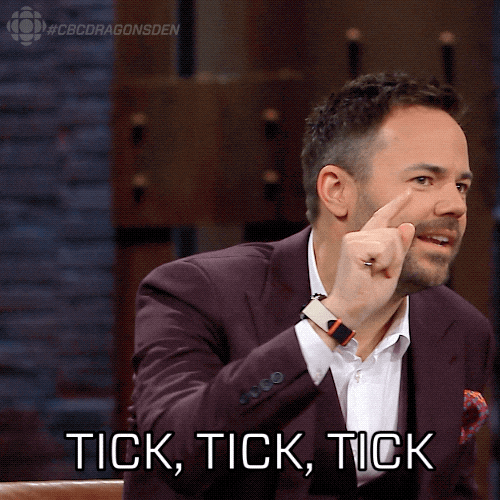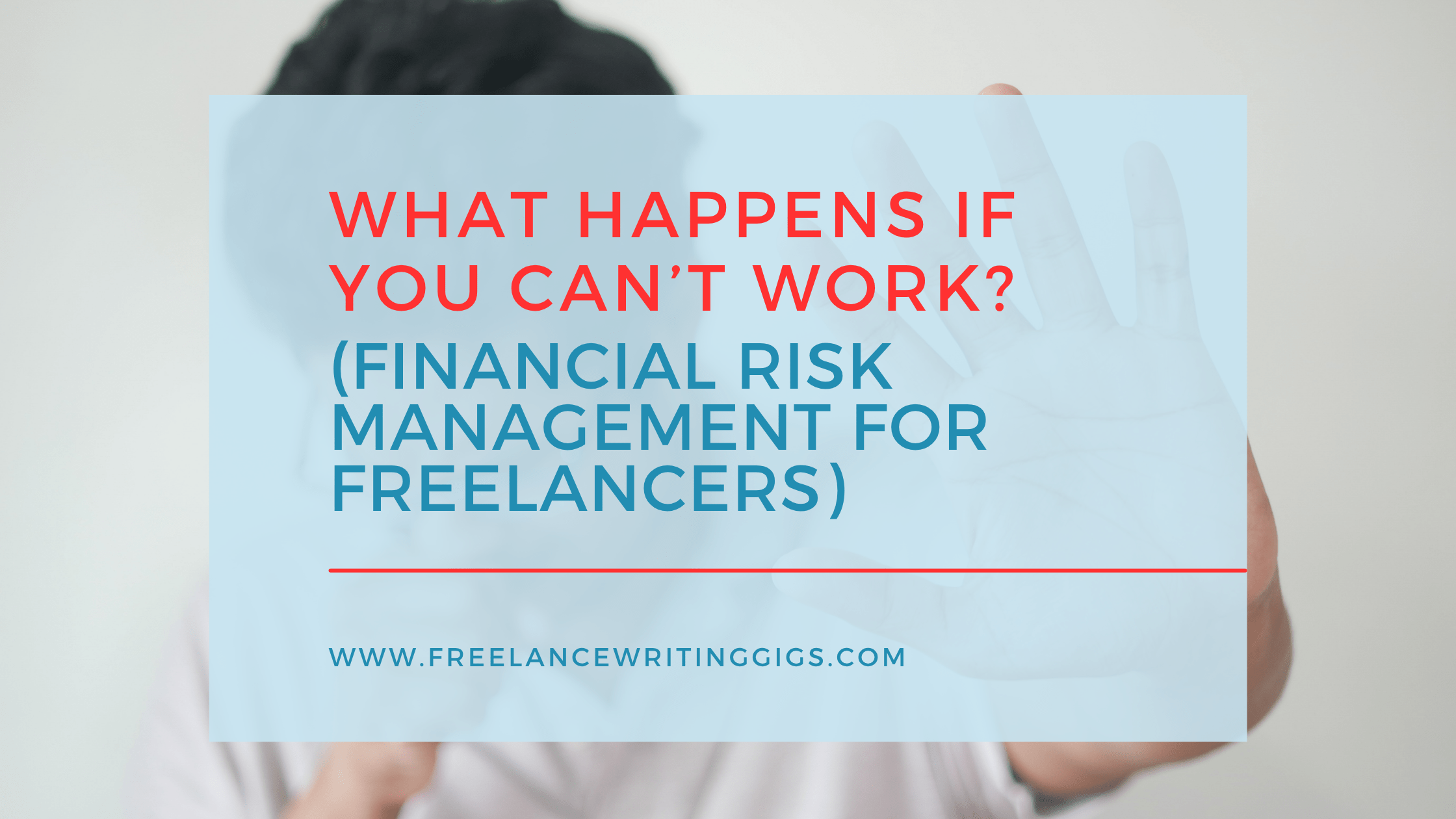You wake up at 3 AM with chest pains. Or maybe it’s a car accident on your morning coffee run. Perhaps it’s just the flu that won’t quit—except three days turns into three weeks, and you’re still stuck in bed while your laptop collects dust.
Here’s the gut-punch reality: No work means no paycheck. Not next week. Not tomorrow. Right now.
While your former corporate colleagues are texting their managers about sick days and watching Netflix guilt-free on the company dime, you’re doing mental math on your phone at 3 AM. How many bills can you skip? Which clients will understand? How long before you’re completely scr3wed?
This isn’t just worst-case-scenario thinking—it’s the financial tightrope every freelancer walks. And most of us? We’re walking it without a safety net, convincing ourselves we’re too busy (or too broke) to build one.
But here’s what I’ve learned in 20 years freelancing: You can’t afford NOT to plan for this.
The good news? Protecting yourself doesn’t require a trust fund or a finance degree. It just requires understanding a few key strategies that can mean the difference between a temporary setback and a financial catastrophe.
Let’s talk about what actually happens when you can’t work—and more importantly, how to make sure you survive it.
The Unique Vulnerability of Freelancers
Let’s be honest: freelancers are flying without a safety net that would make traditional employees break out in a cold sweat.
No Employer-Provided Benefits + Volatile Income
When you’re self-employed, you’re on your own for everything. No paid sick leave. No disability insurance automatically kicking in. No HR department to walk you through FMLA paperwork. When you’re too sick to work, you’re just… not working. And not getting paid.
Health insurance plans? That’s entirely on you, too. In 2024, the average premium for health insurance purchased through the Affordable Care Act (ACA) Marketplace was about $605 per month. However, due to advance premium tax credits, most enrollees paid significantly less, with the average premium after tax credits around $111 per month.
But, looking ahead to 2026, premiums are projected to rise by about 26% to an average of $625 per month before subsidies. Most enrollees (about 22 million of 24 million) currently receive premium tax credits that keep their out-of-pocket costs much lower; without these credits, monthly premiums for many could more than double. These figures come from the Kaiser Family Foundation’s recent analyses and related health policy reporting.
Here’s the catch—many freelancers skip coverage altogether because they’re either unaware of subsidies or assume they can’t afford it. Big mistake.
Even when things are going well, freelance income fluctuates. You might pull in $4,000 one month and $1,000 the next. Now add illness or injury to that equation, and your income doesn’t just dip—it flatlines.
And clients? They don’t wait around. That project you couldn’t finish gets reassigned. That ongoing retainer? They find someone more reliable. Lost opportunities compound fast, and rebuilding momentum after a health crisis can take months—sometimes longer than the actual recovery.
The Emergency Fund Reality Check
Here’s where it gets really scary. According to Bankrate, 27% of U.S. adults report having no emergency savings, and 33% have more credit card debt than emergency savings. This indicates that nearly one in three Americans would likely go into debt if they experienced an unexpected financial shock, underscoring the fragile financial position of many households.
For freelancers specifically, the situation is even more precarious. When your entire income depends on your ability to show up and deliver, that’s not just a worry—it’s a legitimate existential threat.
The math is simple but brutal: No work = No income = Financial catastrophe.
And unlike traditional employees who might have some runway with accumulated PTO or severance, freelancers hit the ground at full speed.
So how do you protect yourself from this perfect storm of vulnerability? The answer isn’t one silver bullet—it’s building multiple layers of protection. Think of it like the backup systems on an airplane: if one fails, you’ve got others to keep you airborne.
How to Manage Your Financial Risks as a Freelancer
Take these steps to ensure you have your financial bases covered in case things get rough.
Get Health Insurance (Your First Line of Defense!)

Let’s get one thing straight: skipping health insurance to save money is like removing the brakes from your car to improve gas mileage. Sure, you’ll save a little now, but the cost when things go wrong? Catastrophic.
A single hospital stay can easily run $10,000 or more. Emergency surgery? That’s six figures without insurance. Even “minor” medical issues add up fast when you’re paying full freight for every doctor’s visit, prescription, and test.
Many years ago, soon after I left my corporate job (and health benefits), I got acute pancreatitis. Two weeks and a 6-figure hospital bill later, I was utterly spent. Needless to say, I learned my lesson. Every month, I set aside money for my health insurance premiums. Non-negotiable.
Where to find coverage:
- Marketplace/ACA plans
- Professional association group plans
- Spouse’s employer coverage
What to prioritize:
- Hospitalization and major medical (the big stuff that bankrupts people)
- Prescription drug coverage (chronic conditions don’t wait)
- Emergency services (accidents don’t check your bank balance first)
The bottom line: One medical emergency without insurance can wipe out years of freelance earnings. Don’t let it happen.
Get Disability Insurance: Your Income Lifeline
Here’s what most freelancers don’t realize: One in four working adults will become disabled during their working years. Not might. Will. And we’re not just talking about dramatic accidents—the most common claims for short-term disability are mental health issues, poisoning, and musculoskeletal injuries like strains or even carpal tunnel.
Disability insurance replaces a percentage of your income if injury or illness prevents you from working. A good rule of thumb is to choose a benefit amount around 50% of your monthly income. So if you typically bring in $5,000/month, you’d get $2,500/month in benefits.
Cost reality: Premiums generally range from 1% to 3% of annual income. For someone earning $60,000 annually, that’s $600-$1,800 per year—or roughly $50-$150 per month.
Key decisions to make:
- Short-term vs. long-term – Short-term typically covers up to 6 months; long-term can extend for years or until retirement
- Waiting period – How long before benefits kick in (30, 60, 90 days). Longer waiting periods = lower premiums
- “Own occupation” vs. “any occupation” – Own occupation pays if you can’t do YOUR job, even if you could technically work elsewhere. This is crucial for freelancers with specialized skills.
Many insurance companies require proof that you’ve been self-employed for two years and will likely ask to see tax returns. Plan ahead—don’t wait until you’ve been freelancing for a decade to look into this.
Build a Bulletproof Emergency Fund
Traditional advice says save 3-6 months of expenses. For freelancers? That’s the bare minimum. If you have one income, are self-employed or have a family to support, you may want to save more. To be on the safe side, go for 9 months. But of course, if you don’t have that, don’t be hard on yourself. Baby steps—start with a month and build up from there.
Why freelancers need more: Your income already fluctuates. You don’t have employer-provided severance. Rebuilding client relationships after time away takes months. The calculation is different when every dollar depends on your ability to show up and deliver.
How to calculate YOUR number:
- Add up essential monthly expenses: rent/mortgage, utilities, groceries, insurance premiums, minimum loan payments, childcare
- Multiply by 6-9 months (or even 12 if you can)
- That’s your target
Where to keep it: Not under your mattress! High-yield savings accounts are your best bet—accessible within a day or two, but not so instant that you’re tempted to dip in for non-emergencies. You want this money earning some interest while staying completely liquid and risk-free.
Some options to consider:
- Openbank by Santander – for standalone savings (4.2% APY)
- LendingClub – great APY boosts (4.2% APY)
- CapitalOne – great in-person customer service (3.4% APY)
- Marcus by Goldman Sachs – track record of strong rates, $0 minimum balance (3.4% APY)
Check current APY rates before choosing (they fluctuate with the Fed rate), but these accounts typically offer 4-5% interest—dramatically better than the 0.01% you’d get with a traditional brick-and-mortar bank’s savings account.
Pro tip: Keep your emergency fund in a different bank than your checking account. That extra friction of transferring between institutions makes you think twice before touching it for non-emergencies.
Another pro tip! Build it on irregular income: save a percentage, not a fixed amount. Had a $10,000 month? Save 20% ($2,000). Only made $3,000? Save 20% ($600). The amounts vary, but the discipline stays consistent.
Diversify Your Income (Before You Need To)
You’ve heard us say this before: Freelance writers need to diversify!
Don’t put all your eggs in one client’s basket. If 80% of your income comes from two clients and you get sick, you’re losing 80% of your income when those relationships falter.
Strategic diversification means:
- Multiple clients across different industries
- Mix of project-based and retainer work
- At least one passive or semi-passive income stream (courses, digital products, affiliate income)
- A bench of smaller clients you can scale up if needed
Build Your Safety Network
Up to now, we’ve been focusing on money, but this isn’t the only protection you need. Have backup freelancers in your network who could step in for urgent client needs. Be transparent with your best clients about having a continuity plan. Build goodwill now so clients will wait for you later.
This isn’t about being pessimistic—it’s about being professional. The freelancers who survive setbacks are the ones who planned for them.
What’s that saying… Fail to plan, and you plan to fail? Don’t be that!
Create Your Personal Risk Management Plan

Okay, we’ve covered a lot. If you’re feeling overwhelmed, that’s normal—but here’s the thing: you don’t have to do everything at once. What matters is that you start somewhere and build from there. Think of this as your financial safety blueprint. Work through it at your own pace, but don’t skip steps just because they feel uncomfortable or expensive. Future You will thank present You.

Assessment Phase
□ Calculate your monthly baseline expenses
- Add up rent/mortgage, utilities, groceries, insurance, loan payments, childcare
- Be honest about what you actually spend, not what you wish you spent
- Include irregular but essential expenses (annual software subscriptions, quarterly taxes)
□ Identify your highest risks
- Consider your health history and family medical background
- Factor in your age (Risks increase as you get older)
- Think about your work type (Repetitive strain? High stress? Sedentary lifestyle!)
- Evaluate your current client concentration (Too dependent on one or two?)
□ Review your current coverage gaps
- Do you have health insurance? What’s your deductible and out-of-pocket max?
- Any disability coverage at all?
- How many months could you survive with zero income?
- What happens to your clients if you disappear for 3 months?

Action Steps (In Order of Priority)
□ Get health insurance NOW if you don’t have it
- Visit Healthcare.gov (or your state marketplace) to check eligibility for subsidies
- Compare at least 3 plans before choosing
- Don’t just pick the cheapest—balance premiums with deductibles
- Deadline: This week. Seriously.
□ Start or boost your emergency fund
- Open a high-yield savings account at a separate bank
- Set up automatic transfers from checking on your typical payment days
- Start with whatever you can—even $100/month adds up
- Target: Save 20% of every payment you receive
□ Research disability insurance options
- Get quotes from at least 3 providers
- Gather your tax returns (You’ll need proof of income)
- Compare “own occupation” vs “any occupation” policies
- Decide on benefit amount (Aim for 50-60% of average monthly income)
- Choose waiting period based on emergency fund size
□ Diversify your client base
- List your current clients and calculate what % of income each represents
- Goal: No single client should be more than 25-30% of your income
- Actively pitch new clients even when you’re busy
- Develop at least one passive or semi-passive income stream
□ Set up systematic savings
- Create a simple spreadsheet or use an app to track “savings from every payment”
- Pay yourself first—move savings immediately when client payments hit
- Separate accounts for emergency fund vs. taxes vs. business reserves
□ Build your backup network
- Identify 2-3 freelancers in your field who could cover urgent work
- Have an honest conversation with your top 3 clients about continuity planning
- Draft a simple “what to do if I’m unavailable” document with contact info

Ongoing “Maintenance”
□ Quarterly reviews (set calendar reminders)
- Reassess emergency fund target if expenses have changed
- Review insurance coverage—does it still match your income?
- Check client concentration—too dependent on anyone?
- Evaluate if your risk tolerance has shifted
□ Annual deep dive
- Complete financial audit of all coverage and savings
- Adjust disability insurance benefit amounts if income has grown significantly
- Review and update backup freelancer contacts
- Recalculate emergency fund needs based on lifestyle changes (New baby? New mortgage?)
□ Update as major life events happen
- Got married? Review all insurance beneficiaries and coverage
- Had a kid? Increase emergency fund target and disability coverage
- Bought a house? Adjust savings goals and consider additional coverage
- Hit a new income level? Reassess all benefit amounts
Your “Start Today” Checklist

Feeling paralyzed by all of this? Just do these three things right now:
□ Check if you qualify for health insurance subsidies (15 minutes on Healthcare.gov)
□ Open a high-yield savings account (20 minutes online)
□ Transfer $100 into it (or whatever you can spare—even $20 is a start)
Everything else can wait until tomorrow. But don’t let tomorrow become next month!

